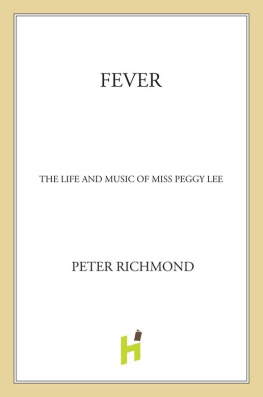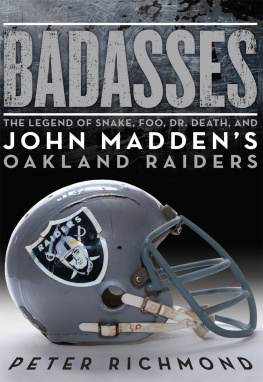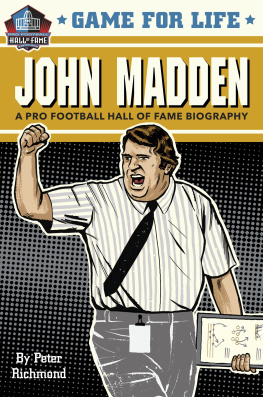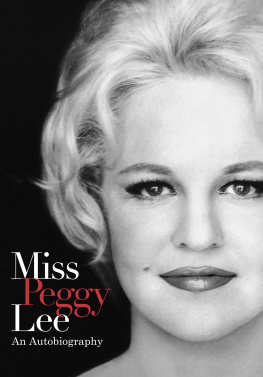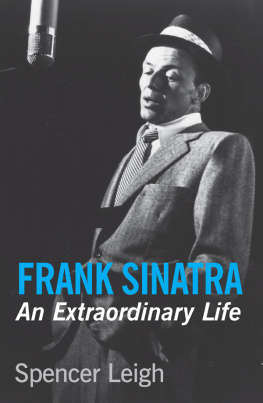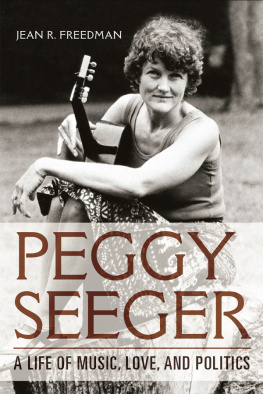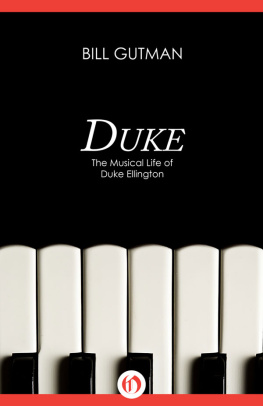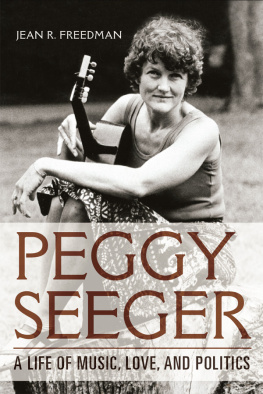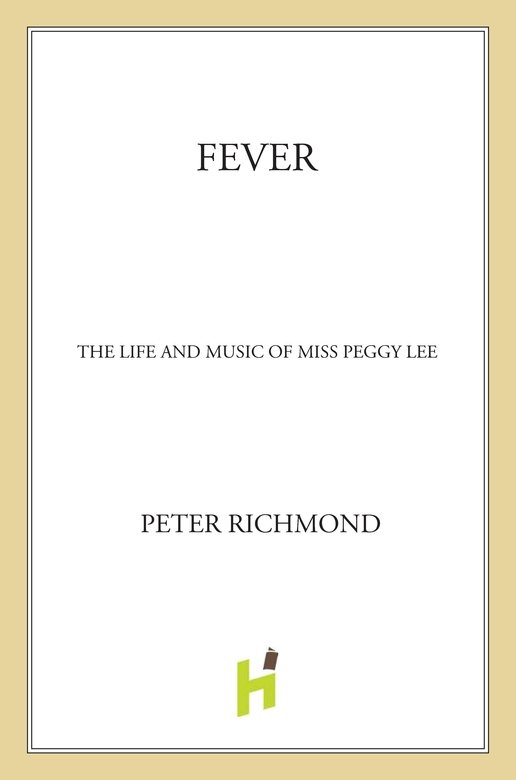I have chosen to acknowledge and thank many of the sources for this book in the notes section to follow. But I would like to take this opportunity to extend special thanks to Will Friedwald, Bill Rudman, David Torresen, Ivan Santiago, and Freeman Gunter for their help in reviewing the manuscript; Phoebe Jacobs, Stella Castellucci, and John Chiodini for their generous time, hospitality and insight; and Kate Stevenson, the keeper of the flame in Jamestown, North Dakota.
In addition, I extend my grateful thanks to the staff at the Institute of Jazz Studies at the Newark, New Jersey, campus of Rutgers University. The IJS is an extraordinary treasure, and this book would not have been possible without its considerable resources or the enthusiasm of its staff; I would like to thank Tad Hershorn in particular. Also, I thank Carol Bursack, the librarian for the Fargo Forum, and Wes Anderson of the Barnes County Historical Society in Valley City, North Dakota.
As always, I thank Esther Newberg at ICM. I am also grateful for the efforts of my tireless editor, George Hodgman, who came up with the idea for this book, and who is therefore one of the two people responsible for it. The other cannot read this acknowledgment, but I must thank her nonetheless. It was through my brief friendship with the extraordinary Rosemary Clooney that I was first introduced to the music of this time, and it was the memory of Rosemarys effervescence, graciousness, and remarkable love of life that gave me the confidence to take on this project when George Hodgman proposed it. Thanks, Rosemary.
PETER RICHMOND, a contributing editor at GQ magazine, has been a reporter for several newspapers and magazines, writing about music, sports, and popular culture. His work has appeared in The New Yorker, The New York Times Magazine, Vanity Fair, and Rolling Stone, as well as several anthologies, including Best American Sportswriting of the Twentieth Century . He has been a regular contributor to National Public Radios Morning Edition and the ESPN Classic television network. He lives in Dutchess County, New York.
In researching this book, I drew upon hundreds of contemporaneous newspaper and magazine accounts. Only the most significant are cited. In addition, I drew extensively on archival material and recordings at the Institute of Jazz Studies at the Newark, N.J., campus of Rutgers University. In addition, I screened several videotapes at the Museum of Television and Radio in both its New York and Los Angeles locations. For dates of Lees recordings, as well as the musicians involved, detailed background information about the recordings, and reviews of various performances, I relied extensively on David Torresens definitive and exhaustive Web site, www.peggylee.com .
For information on popular music in the twentieth century, I consulted numerous books, but extensively and most notably Jazz Singing, by Will Friedwald (Da Capo Press, 1992). For information on musicians and music of the Big Band era, I relied on several books, most notably The Big Bands, by George T. Simon (Macmillan Publishing Company, 1967). For information about Benny Goodmans band during Peggys era, I turned to Benny Goodman: Listen to His Legacy, by D. Russell Connor (Scarecrow Press and the Institute of Jazz Studies, Metuchen, N.J., 1988). I also drew on Peggys own autobiography, Miss Peggy Lee (Berkley Publishing Group, 1989; Bloomsbury Publishing, London, 1990), which remains the definitive account of the ladys life.
Prologue: White Night
For the Basin Street East section, I relied extensively on interviews with Phoebe Jacobs, who was the publicist for the club at the time; an interview with Quincy Jones; and interviews with several musicians, including bassist Max Bennett, guitarist Mundell Lowe, drummer Grady Tate, and the late pianist Joe Harnell.
In addition, I referred to accounts of the Basin Street engagements that appeared in various periodicals, including The New Yorker, and newspapers, including The New York Times, the New York Journal-American, and the Toronto Telegram .
For descriptions and details of New York City and its weather at the time, I consulted primarily The New Yorker and the Times .
I also drew on Gary Giddinss landmark biography of Bing Crosby, A Pocketful of Dreams (Little, Brown and Company, 2001).
In addition, I relied on two recordings of Peggy at Basin Street: Basin Street East Proudly Presents Miss Peggy Lee (Capitol) and Peggy at Basin Street East (Collectors Choice), in describing Lees performance.
Invaluable information for this section, and for several of the subsequent chapters, also came from David Torresens Web site on Miss Lee ( www.peggylee.com ).
According to the liner notes of the Collectors Choice album, the blizzard of 1961 occurred on the night of the recording, but this is in dispute. However, if the recording did not take place on the night of the snowstorm, but within the following few days, Miss Lees set list would likely have been virtually identical.
One: In Dakota
Much of the detail on Peggys childhood in Jamestown and Nortonville, North Dakota, is from the authors visits to the area. In addition, I relied on Kate Stevensons documents, including birth and death records, videos, and extensive research on Miss Lees life. For additional and corroborative information on Lees upbringing, as well as information on other parts of her life, I referred to music author Gene Leess definitive liner notes for the 1998 Capitol Records four-CD compilation, Miss Peggy Lee. Further information on her childhood came from numerous interviews Peggy gave throughout her life to several dozen journalists, as well as accounts in various periodicals, including The Jamestown Sun.
In addition, for details about Nortonville and Jamestown as well as remembrances of Peggys father and stepmother, I interviewed several residents. I am thankful for George Spanglers guided tour, as well as for his wealth of information. For details about life at the time in these towns and in rural North Dakota in general, I referred to published accounts of the histories of both Jamestown and Nortonville, including Century of Stories: Jamestown and Stutsman County, published by the Fort Seward Historical Society in 1983. For details of Peggys mothers funeral, I relied on newspaper accounts. For information on Barnes County, I consulted the wealth of documentation at the Barnes County Historical Museum in Valley City, which included clips from the Valley City Times-Record, as well as video archives, including an interview with Pearl Buck.
For information on the Midland Continental Railroad, I relied on several histories, most prominently two documents written by railroad historian F. Stewart Mitchell: an article in Trains magazine, and his research in support of an application for National Register of Historic Places status for the Wimbledon MCRR depot. General information on railroads and those riding the rails during the Depression comes from Riding the Rails, the award-winning PBS documentary by filmmaker Michael Uys and his wife, Lexy Lovell.
Two: Pick Up Your Telephone
For Peggys years in Wimbledon and Valley City, in addition to the authors visits to the town and to the Midland depot where she lived, I relied on interviews with classmates, including Ethelyn Olson, for whose thoughts I am particularly grateful. I also thank Peggy Rose for her vivid recollections of Wimbledon. For Peggys graduation poem and the recollections of William Brenner, as well as information on the railroad, I relied on documents and correspondence provided by Myrna Bultema, the curator of the unofficial Peggy Lee museum housed in the old depot in Wimbledon.

